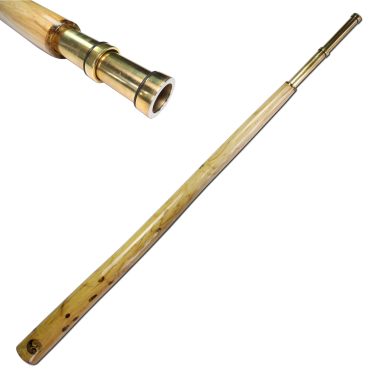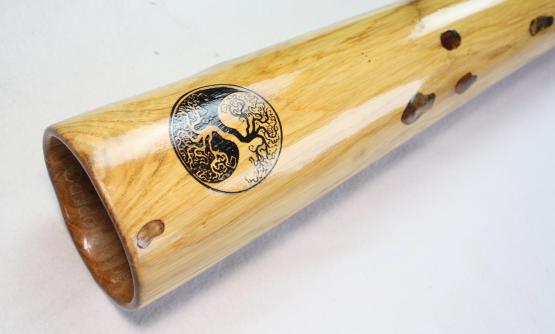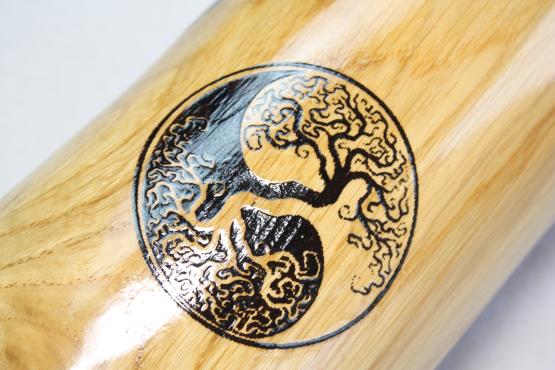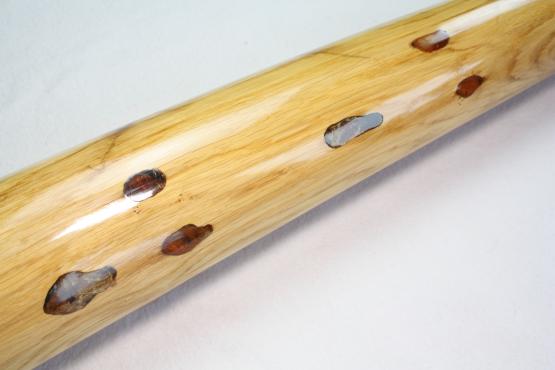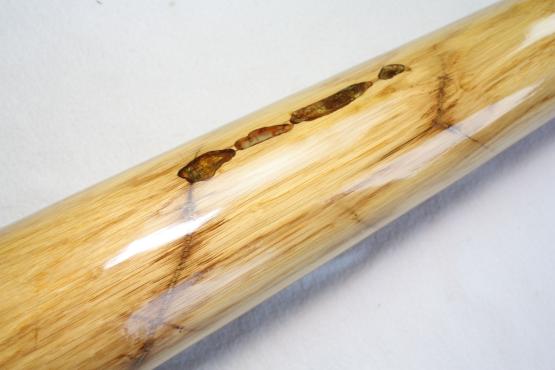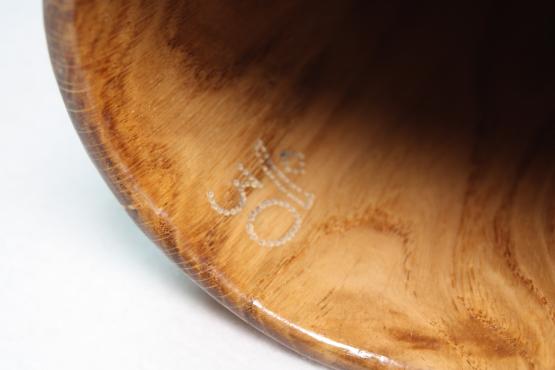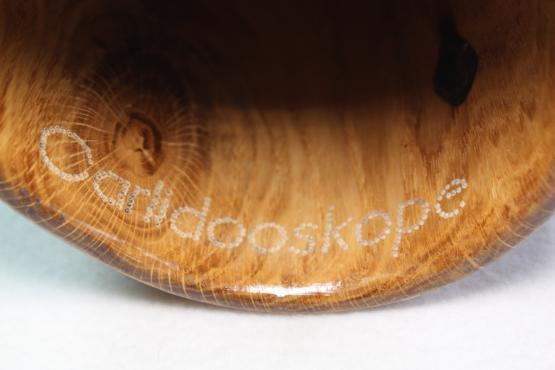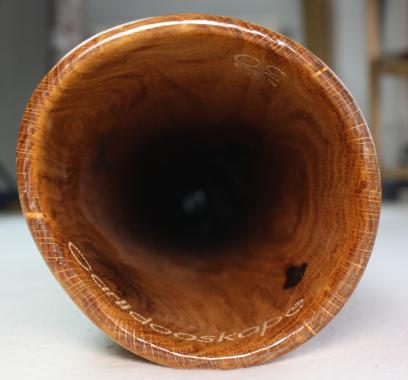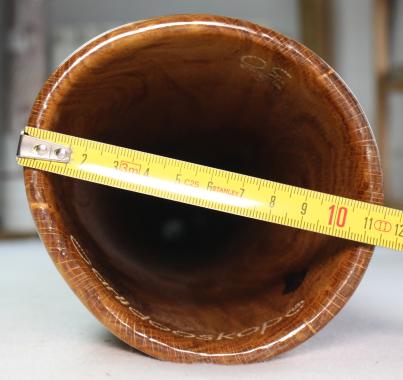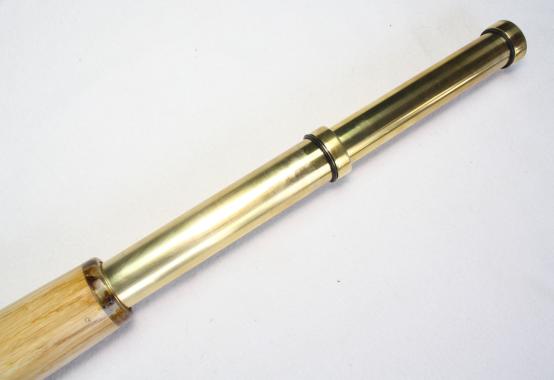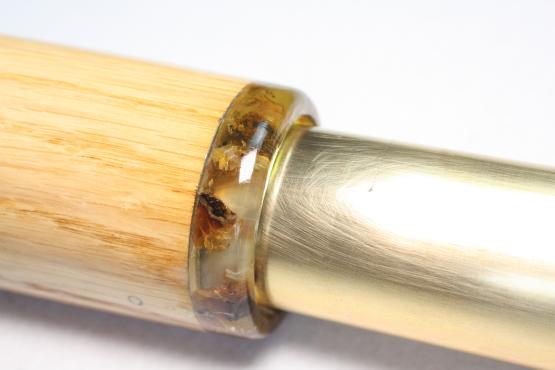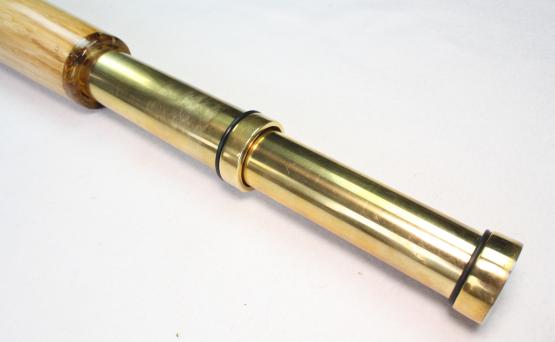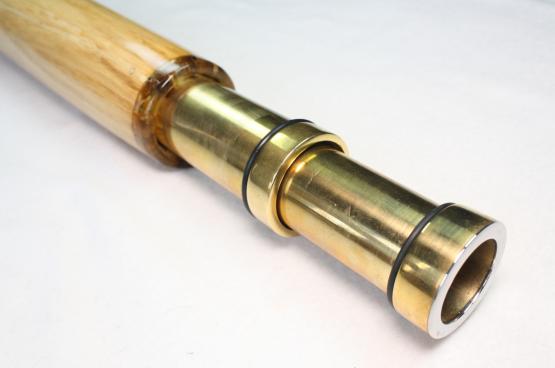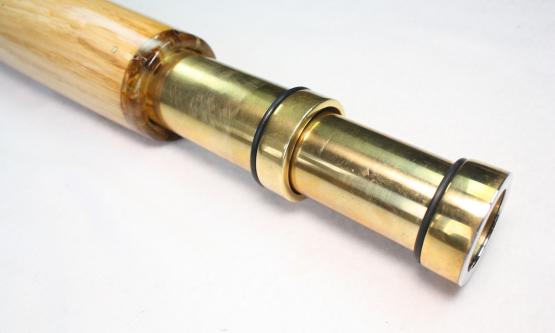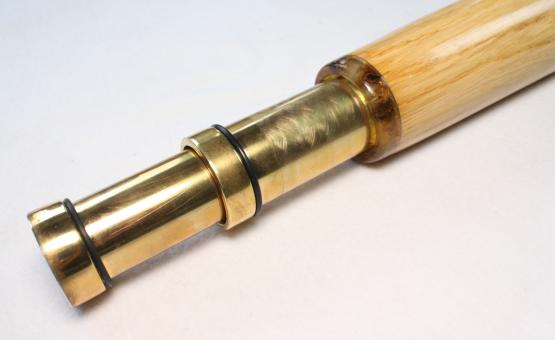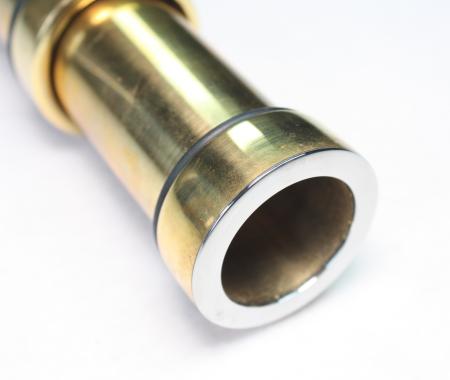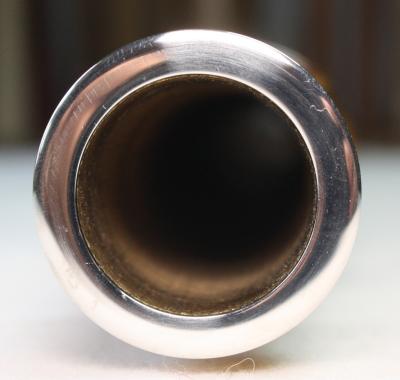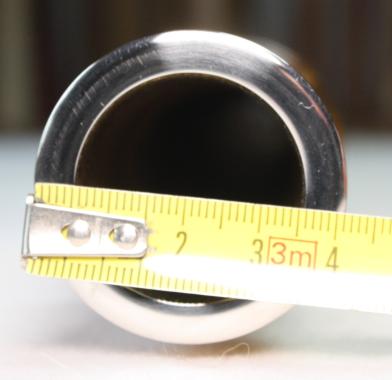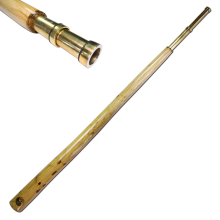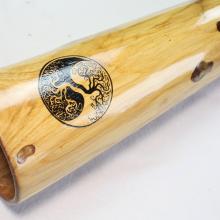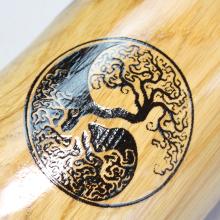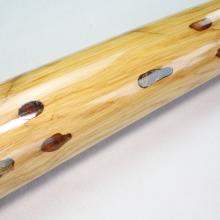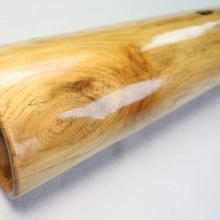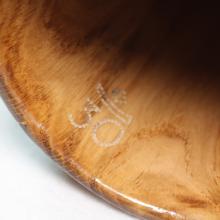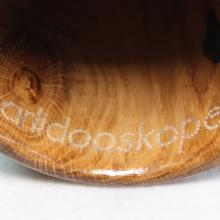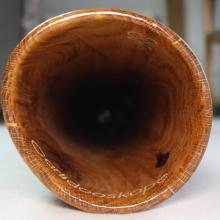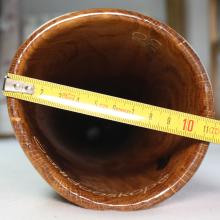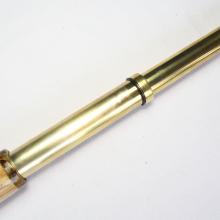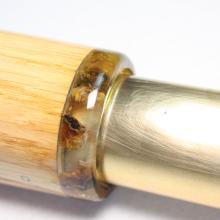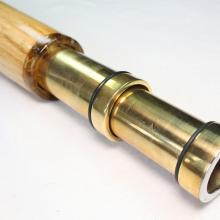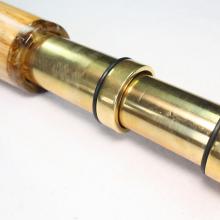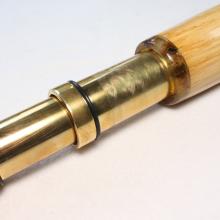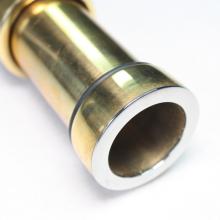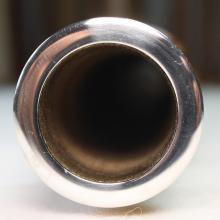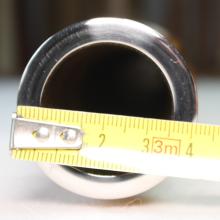Double Slide Carlidooskope Oak
Produit plus disponibleMy Comments: Please note that this didgeridoo is made in one piece (neither cut in two and glued to, nor made on a lathe, etc.) Carl mainly uses local hardwoods with a diameter of between 20 and 30 cm (apple tree , pear, walnut, maple, cherry...) The didgeridoo is made by hand with special tools until it reaches a wall thickness of 5-8 mm. There are no limits to the design. The wood is sealed inside and out with a special oil-based varnish in several layers. Carl chose a natural finish that is a little less advanced in shine and texture than epoxy resin (therefore less hard) which leaves the wood more freedom and thus less constraint!
Slide system: Carl uses brass for the inserts, because this metal is widely used in the production of musical instruments and has better sound properties than other metals. The tubes are polished and adjusted by hand. The mouthpieces are made of bronze and stainless steel and also shaped by hand. The wood/metal combination has no impact on sound quality, thanks to the ratio of the length of the metal part to the length of the wood. It is thus possible to adjust the note in the exact key of another instrument.
This Carlidooskope is therefore a double slide, that is to say that it has two slides which slide into each other thanks to a system of joints. Thus allowing you to obtain an even wider range of notes! And can therefore be played in all ranges from A to E. Car made 30 amber inlays in this didg as well as a yang yang root tree !!
- Length: Minimum highest note - E: 1.67 m
- Length: Medium - C : 2.09 m
- Length: Maximum lowest note - A : 2.53 m
- The cover and shipping costs are free! (only for France)
Classification
This scale is the result of an air column/bell start ratio If we divide the diameter of the bell with that of the beginning of the air column we get a number between 1.5 and 3.5. We can classify all the didgeridoos in 4 large families. Each family groups the instruments with a similar character, simply based on the overall shape of the air column (conical/cylindrical) and on the diameter of the column (wide/narrow). The result is a simple and very reliable reading grid, making it easier to search and purchase on line.
The diameters are measured with a caliper, start of the air column after the mouthpîece. This ratio is very reliable for a didg having a air column with a 'smooth' internal work, in the case of a hollowed eucalyptus instrument it give an approach of the instrumental character.

Carl Jungwirth
Austrian manufacturer of "Carlidooskope" didgeridoos
Carl Jungwirth, Who is he?
My name is Carl Jungwirth, I live in Austria. I mainly produce high-end didgeridoos in the concert class. The name "Carlidooskope" derives from the carleidoscope, which means something like (relating to beautiful pictures) and is composed of my nickname Carli, the didgeridoo and the telescope as a sliding slide mechanism. Carlidooskopes are made from local hardwoods with special tools and made from a single, whole trunk, without the body of the didgeridoo being cut.
My first aerophone was a garden hose that I used as a horn. At the age of 10 I learned the trumpet and at 16 I bought my first didgeridoo. I was immediately fascinated by the archaic sound of the didgeridoo, rich in nuances.
Comment Does Carl do his didgs?
For my concert class didgeridoos, I mainly use local hardwoods with a diameter of between 20 and 30 cm (apple, pear, walnut, maple, cherry...). Only a few other precious woods are used for the embellishment of the bell or the slide joint system. The didgeridoo is made by hand with special tools (from a single trunk and whole, without the body of the didgeridoo being cut or turned), until it reaches a wall thickness of 5-8 mm . . There are no limits to the design. The wood is sealed inside and out with a special oil-based varnish in several layers and polished to a high gloss. For the slide system, I use brass for the inserts, because this metal is widely used in musical instrument production and has better sound properties than others. The tubes are polished and adjusted by hand. The mouthpieces are made of bronze and stainless steel and also shaped by hand.
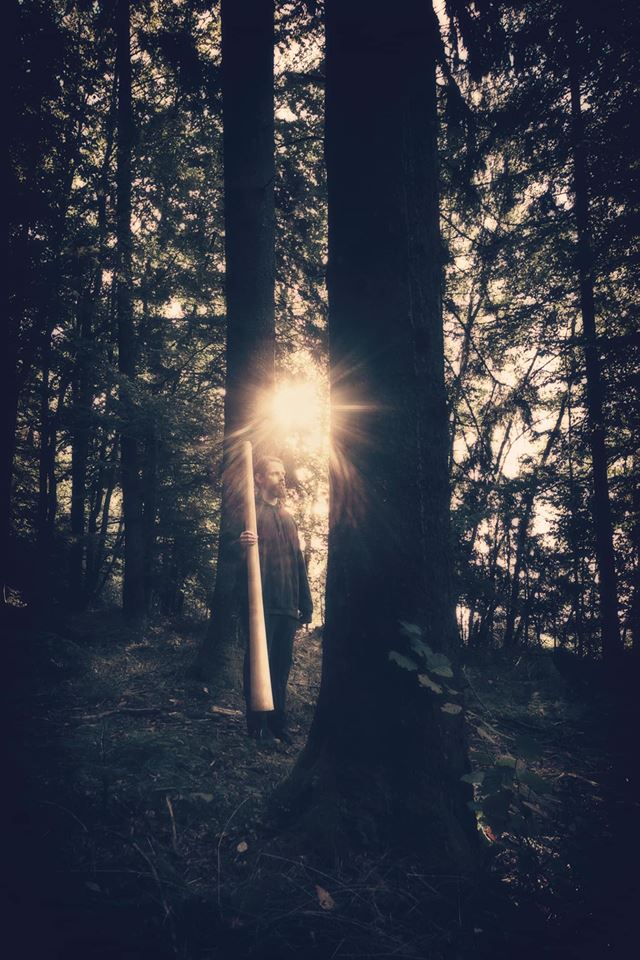 | 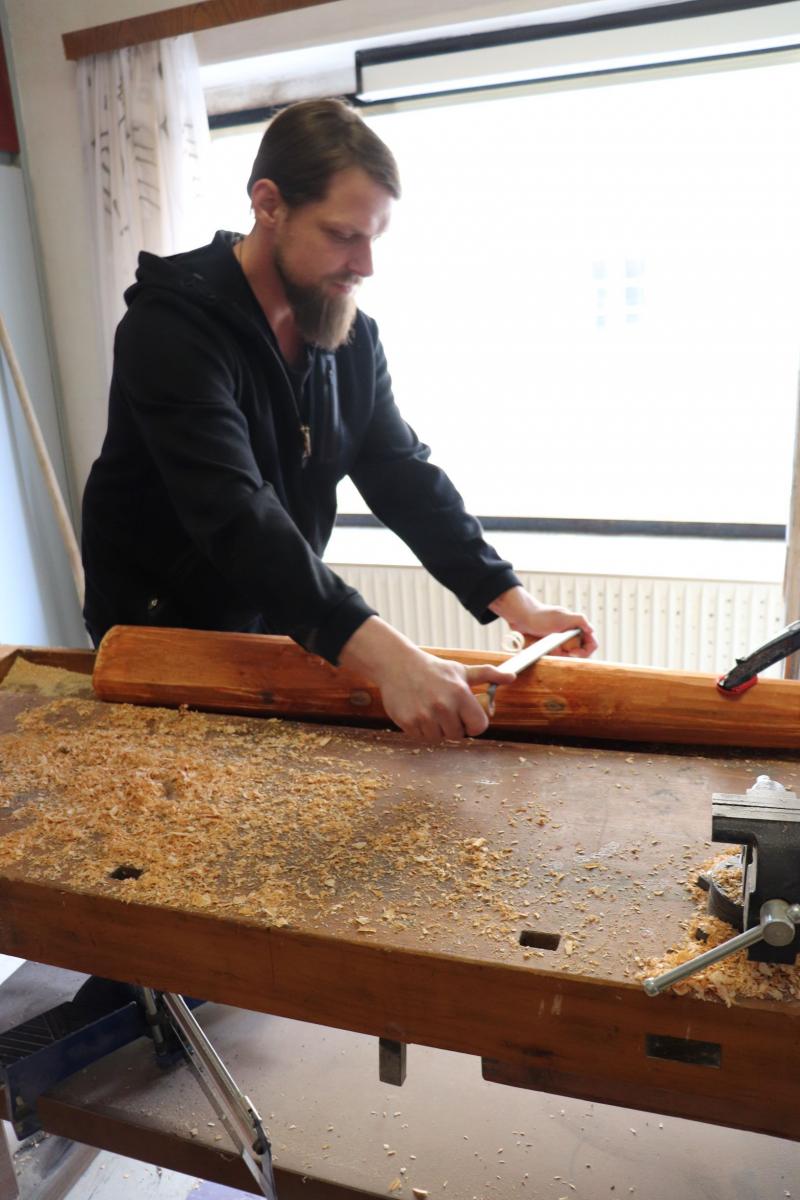 |
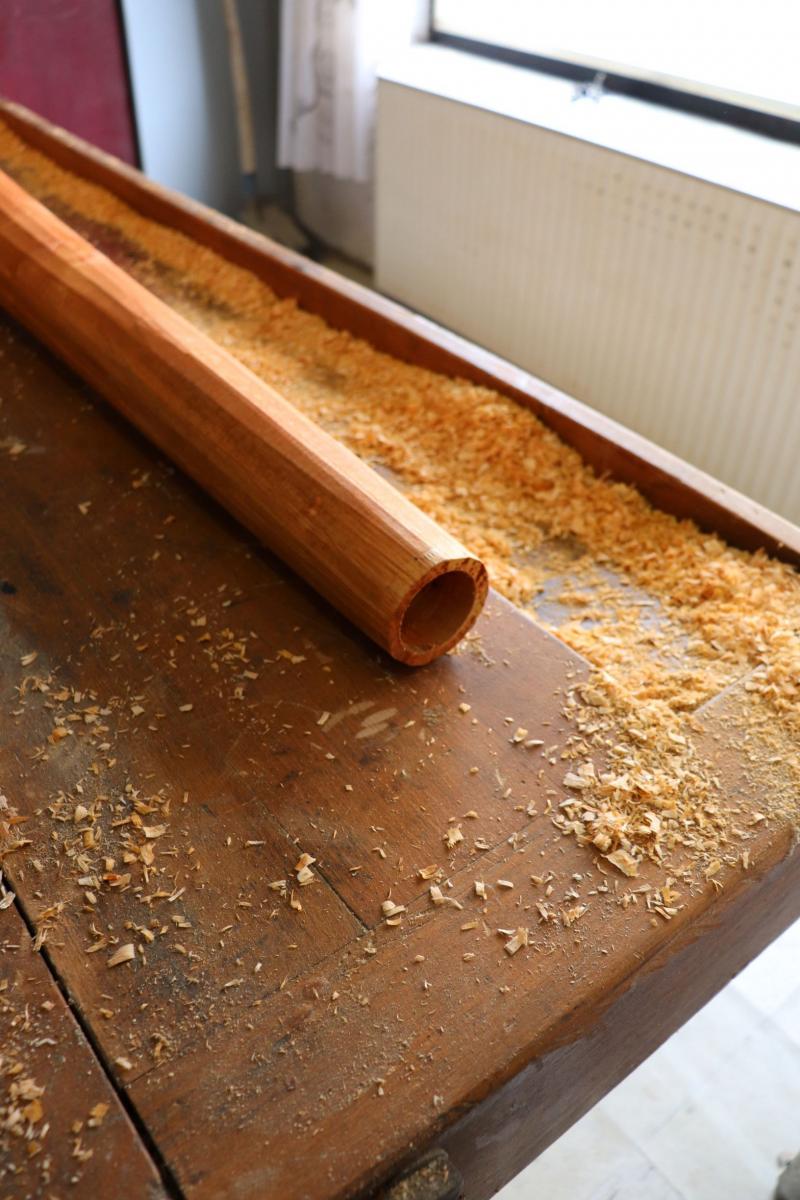 | 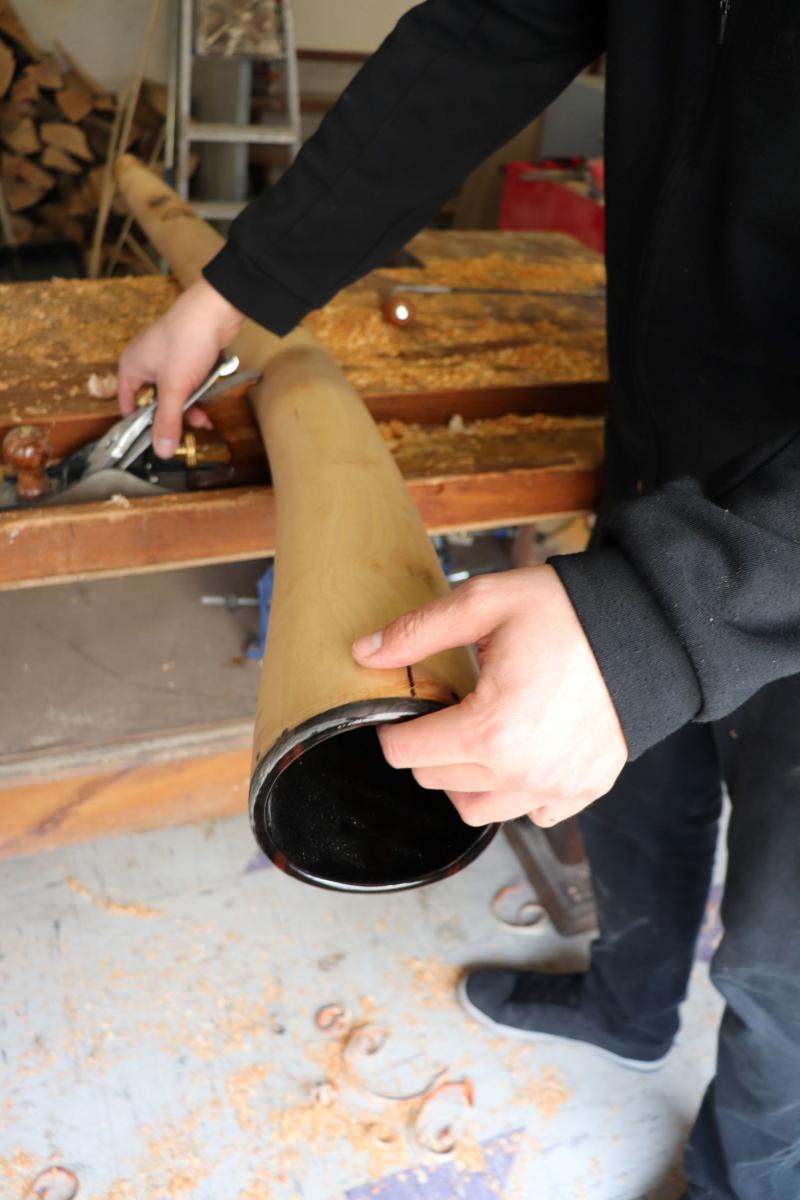 |
